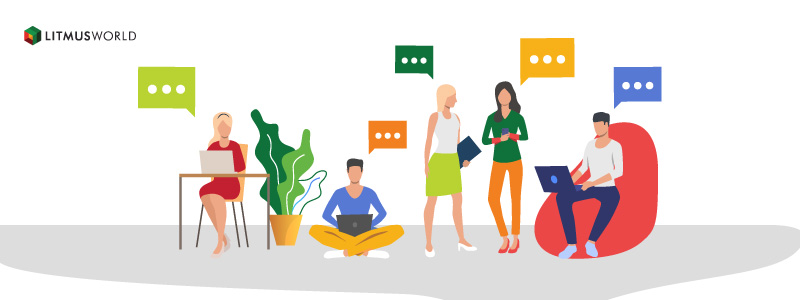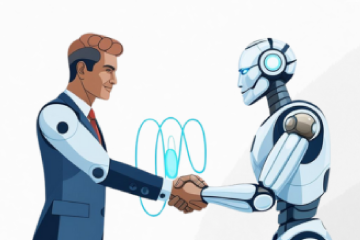Customer Experience in EdTech
CX in EdTech

As a response to the pandemic, restrictions and health advisories, the traditional mode of receiving and imparting education has seen a massive shift. Not only have governments, schools, teachers and students become open to this shift in pedagogy, but also the Indian edtech industry has seen a 32x increase in funding in 2022 as compared to 20101.
Learning models are turning hybrid, with institutes choosing a mix of online classes and in-person lectures, working executives looking for upskilling via online platforms that offer certification programs from the world’s best universities, and tuitions for the K-12 segment being offered online.
None of this is new. So why are we talking about customer experience in education?
With the edtech industry growing, there is no dearth of platforms available for upskilling, K-12 segment or higher education. Different platforms are now allowing you to learn from the best if you have a smartphone and an internet connection. But the question remains, why should a learner come to you?

Why CX in edtech?
When a learner comes to your platform looking for something, it means they’re invested in their growth story. This means if they don’t find what they’re looking for, or are not satisfied with your delivery, they will go somewhere else.
Potential competitors are cropping up everywhere. Edtech is no longer confined to the few. It is important to keep an eye on customer experience to avoid losing business and sustainable growth.
A leading Indian edtech brand’s response rate was as high as 46%
What does customer experience look like in edtech?
Think of big brands and think about why you go back to them, as a customer yourself. It is usually because of the consistency of service they provide, they’re reliable and they listen to you and make you feel heard. The same applies to an edtech platform.
Regular assessment
Measuring customer experience regularly is vital to sustained success. By utilizing programs like Net Promoter Score (NPS®) that give you an understanding of why someone would or wouldn’t recommend you, you can observe what works or doesn’t work for your learners.

Listen and act on feedback
Measuring what works or doesn’t work for your learners is only one part of the equation. The second part is to act on the feedback and provide solutions. Nothing will frustrate a learner more than choosing a program that promises them career placement/support and then failing to help them achieve it.
Continuous improvement
It’s not enough to do the NPS activity once or at only one stage of the learner’s journey. There are so many potential touchpoints where you can gather your feedback, like: why/why not a learner took up a course, why/why not did they reach the end of the course, how did/did not it help them, etc.
Commitment to this improvement cycle will ensure you build your credibility and reliability in the eyes of your learners.
A leading Indian edtech brand saw their Net Promoter Score® increase by 32 points over the last two years.
Potential CX touchpoints in edtech
While your platform would need to be robust to ensure navigation is intuitive, there are other points of concern that a learner may have, like:

- Quality of content
This touchpoint talks about the course material and whether it takes into account the learner’s background and experience. For example, a beginner’s course will need to lay a stronger foundation but a course designed for people with work experience will need more real-world case studies to solve. - Pedagogy
Online courses can be interactive – where learners get a chance to engage with peers or faculty or they they can be passive – where learners only consume the information provided in the course. This touchpoint measures the quality of sessions, assignments, case studies, etc. - Instructor quality
The instructor quality, their expertise and background, and the support provided by them can be a huge draw for a particular course. - Course structure
A well-structured course can smoothen the process of taking an online course for a learner. This touchpoint covers if the course is only theory or are there enough practical learnings as well. - Relevance of course
A learner spending time, money and effort into an e-course needs to see the relevance of it, especially in terms of it being in-line with the latest market trends. - Pacing of course
Because an online course does not have the discipline of a physical classroom, it is critical to understand whether enough time is given to learners to complete assignments and other coursework. - In-program support
Taking an online course can be isolating and confusing. Support whether from peers or faculty or even the platform is important to measure. - Course delivery
How a course is delivered, whether it is video-only or are there individual readings, interactions between learners, etc. can be an important selling point for a course. - Career/placement support
This touchpoint is especially important when learners are doing a course for upskilling. As a platform, you need to check whether the support is enough or if there is a perceived lack. - Alumni engagement
Alumni can you your biggest promoters. Support provided for the alumni ensures you have enough people on the ground with great experience with your product to talk about it with more people.
Perhaps the most important learners an edtech platform should reach out to or engage with are the alumni. It is they who will serve as a real-time example of success to other potential learners.
One of the things you must remember as an edtech platform is that while the learning methodology has evolved, learners have not and they’re still human. While they would understand that everything in the offline world cannot be successfully translated into the online world, there are some expectations they would have. Like if they’re getting enough screen-time or email time with their instructors. You will only know this if you capture and measure their feedback.
Got questions? Contact us to get a detailed understanding and a demo from one of our CX experts.

